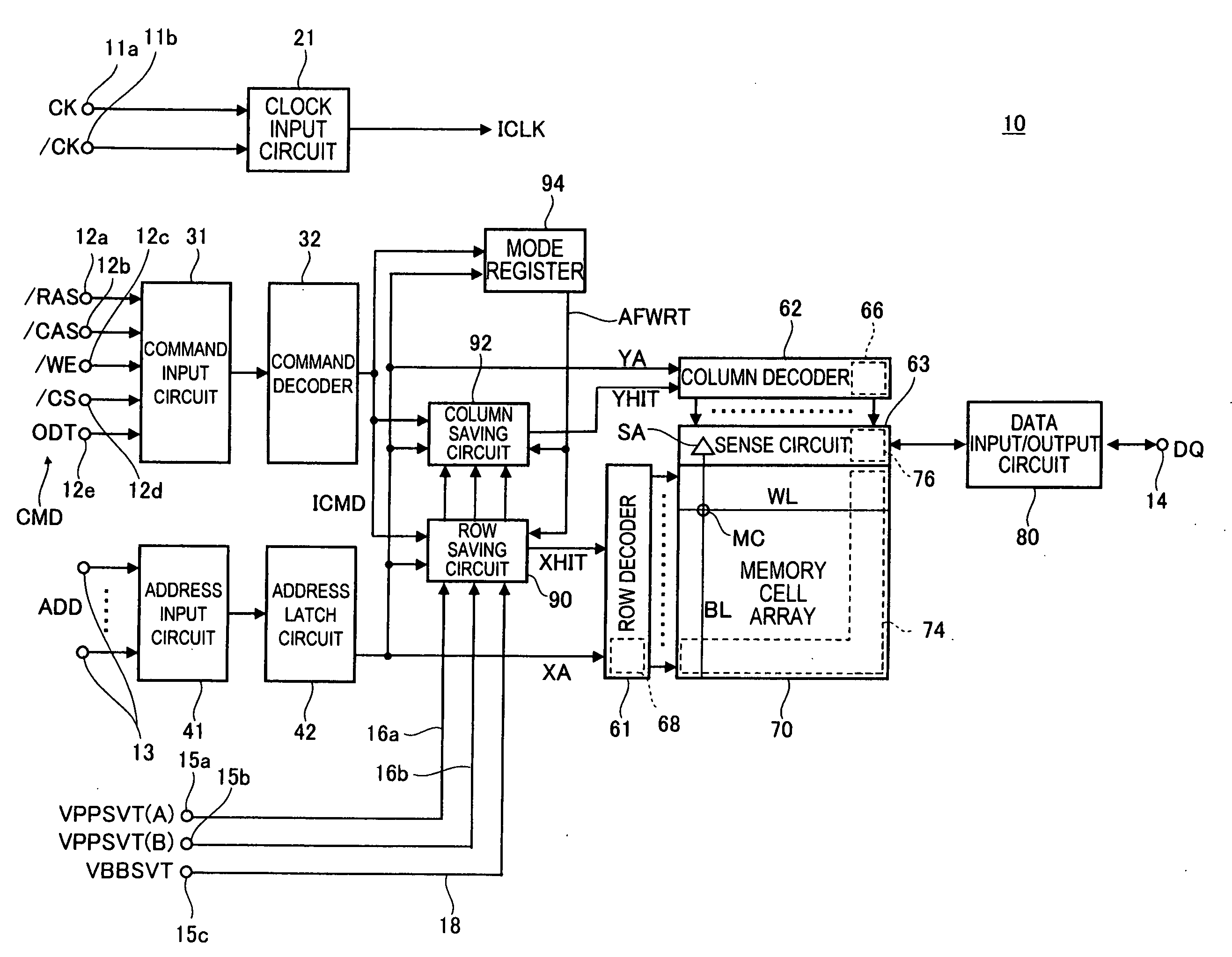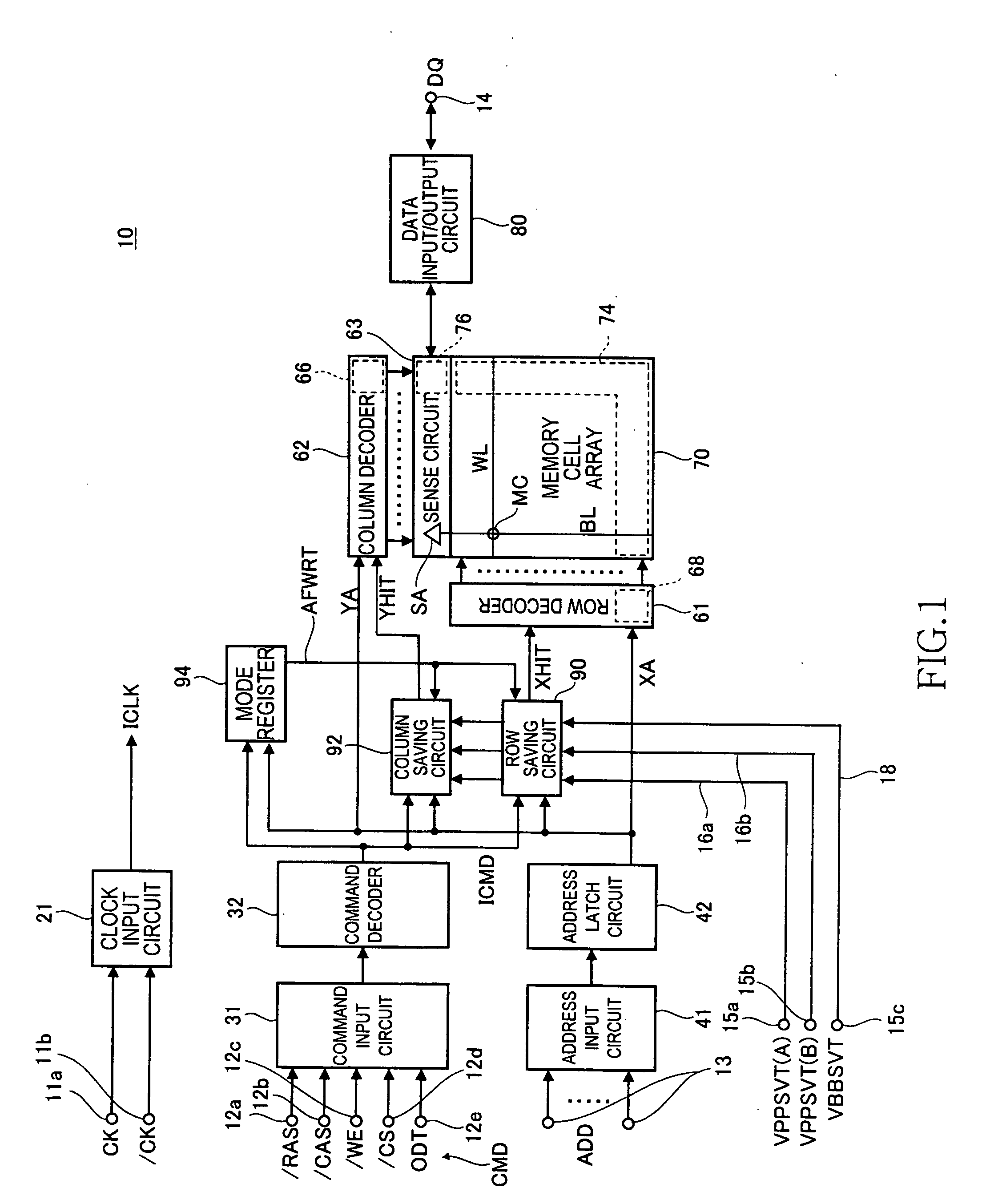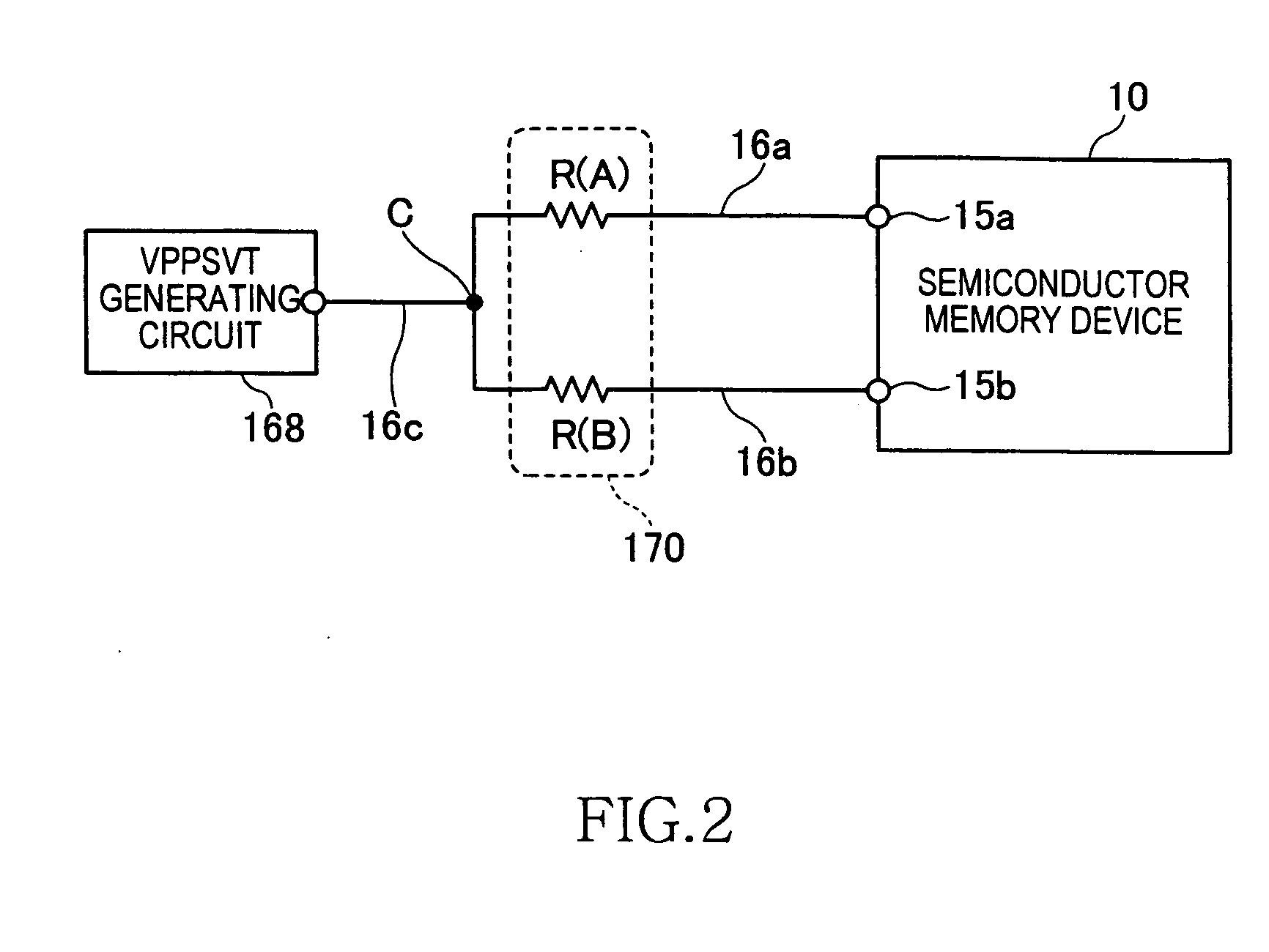Semiconductor device having nonvolatile memory elements
- Summary
- Abstract
- Description
- Claims
- Application Information
AI Technical Summary
Benefits of technology
Problems solved by technology
Method used
Image
Examples
Embodiment Construction
[0032]Preferred embodiments of the present invention will be explained below in detail with reference to the accompanying drawings.
[0033]FIG. 1 is a functional block diagram of a semiconductor memory device 10 according to an embodiment of the present invention. The semiconductor memory device 10 is a DDR (Double-Data-Rate) SDRAM (Synchronous Dynamic Random Access Memory), including clock terminals 11a and 11b, command terminals 12a to 12e, an address terminal 13, a data input / output terminal 14, and power source terminals 15a to 15c, as external terminals. Although the semiconductor memory device 10 further includes a data strobe terminal, a reset terminal, a calibration terminal and the like, these terminals are omitted in FIG. 1.
[0034]The clock terminals 11a and 11b are supplied with external clock signals CK and / CK, respectively. The external clock signals CK and / CK are then supplied to a clock input circuit 21. A signal with “ / ” attached at the head in this specification mean...
PUM
 Login to View More
Login to View More Abstract
Description
Claims
Application Information
 Login to View More
Login to View More - Generate Ideas
- Intellectual Property
- Life Sciences
- Materials
- Tech Scout
- Unparalleled Data Quality
- Higher Quality Content
- 60% Fewer Hallucinations
Browse by: Latest US Patents, China's latest patents, Technical Efficacy Thesaurus, Application Domain, Technology Topic, Popular Technical Reports.
© 2025 PatSnap. All rights reserved.Legal|Privacy policy|Modern Slavery Act Transparency Statement|Sitemap|About US| Contact US: help@patsnap.com



